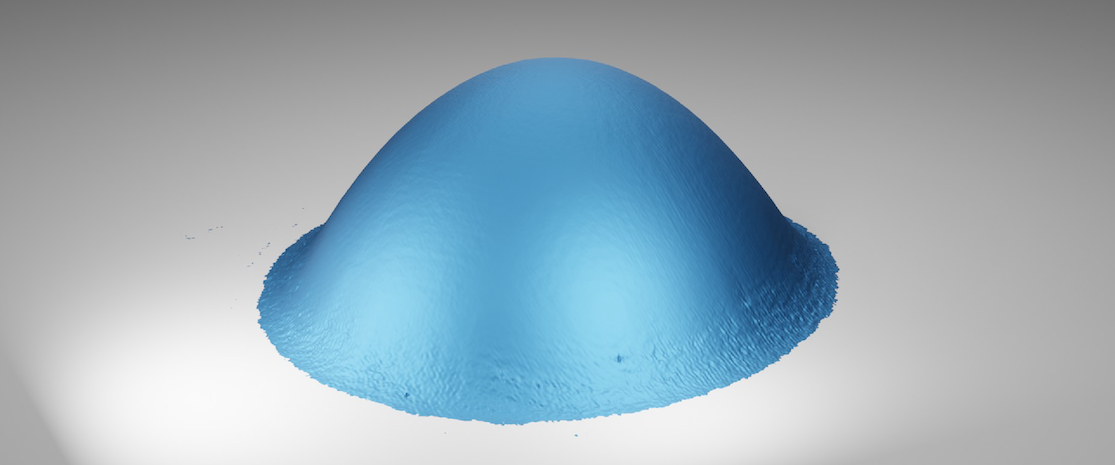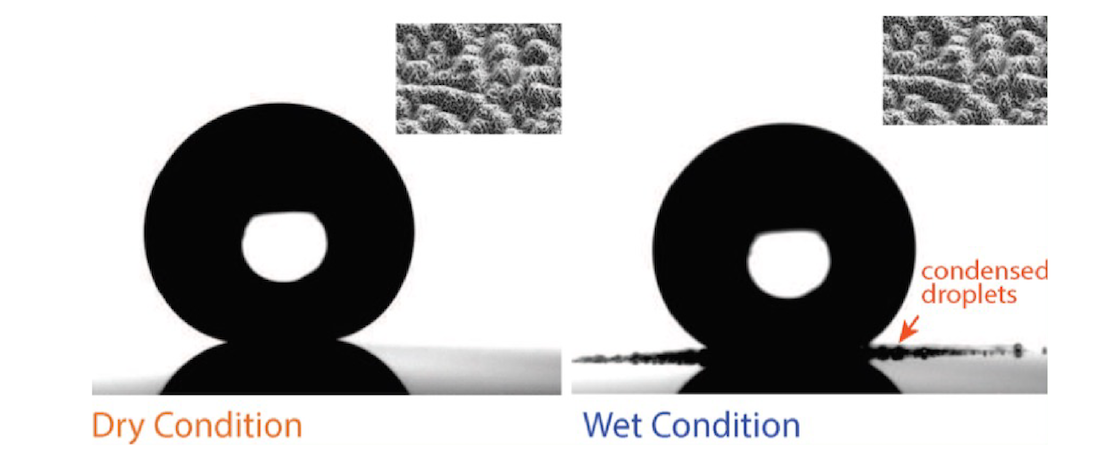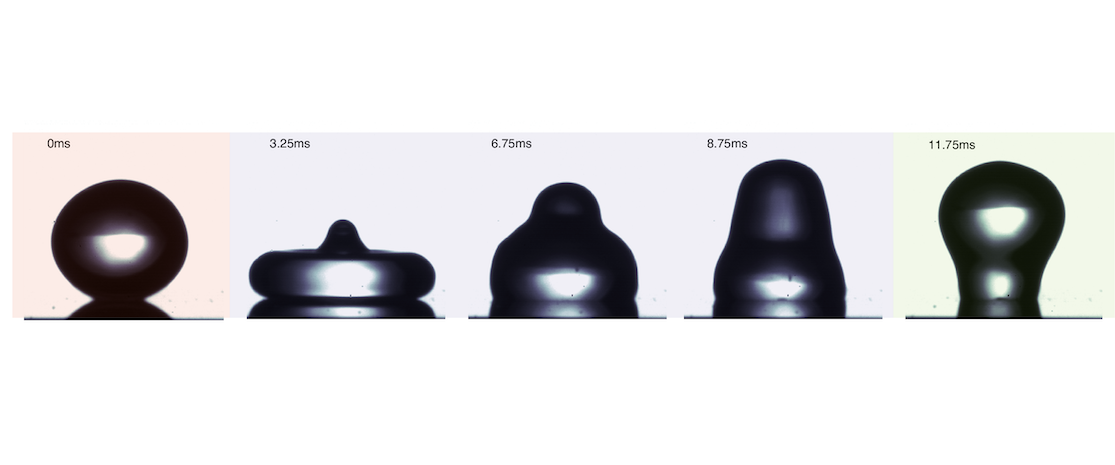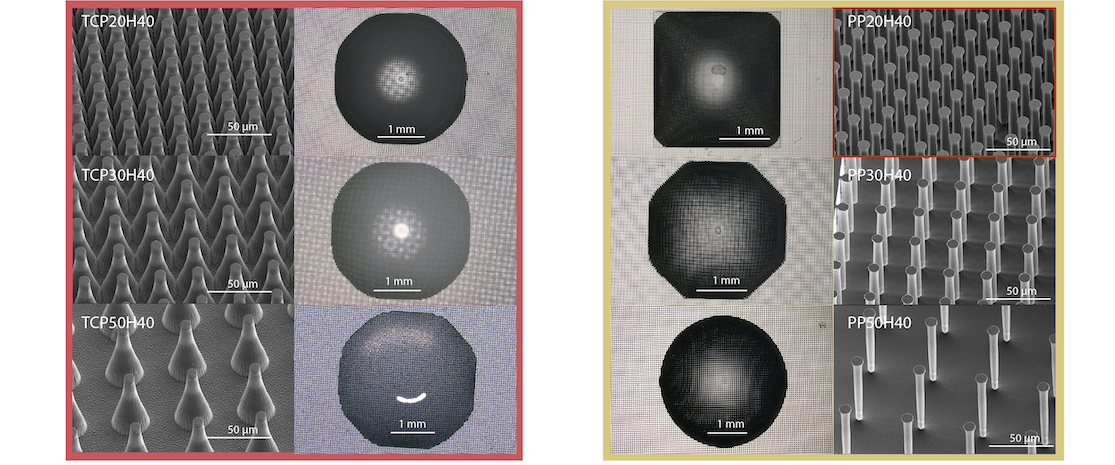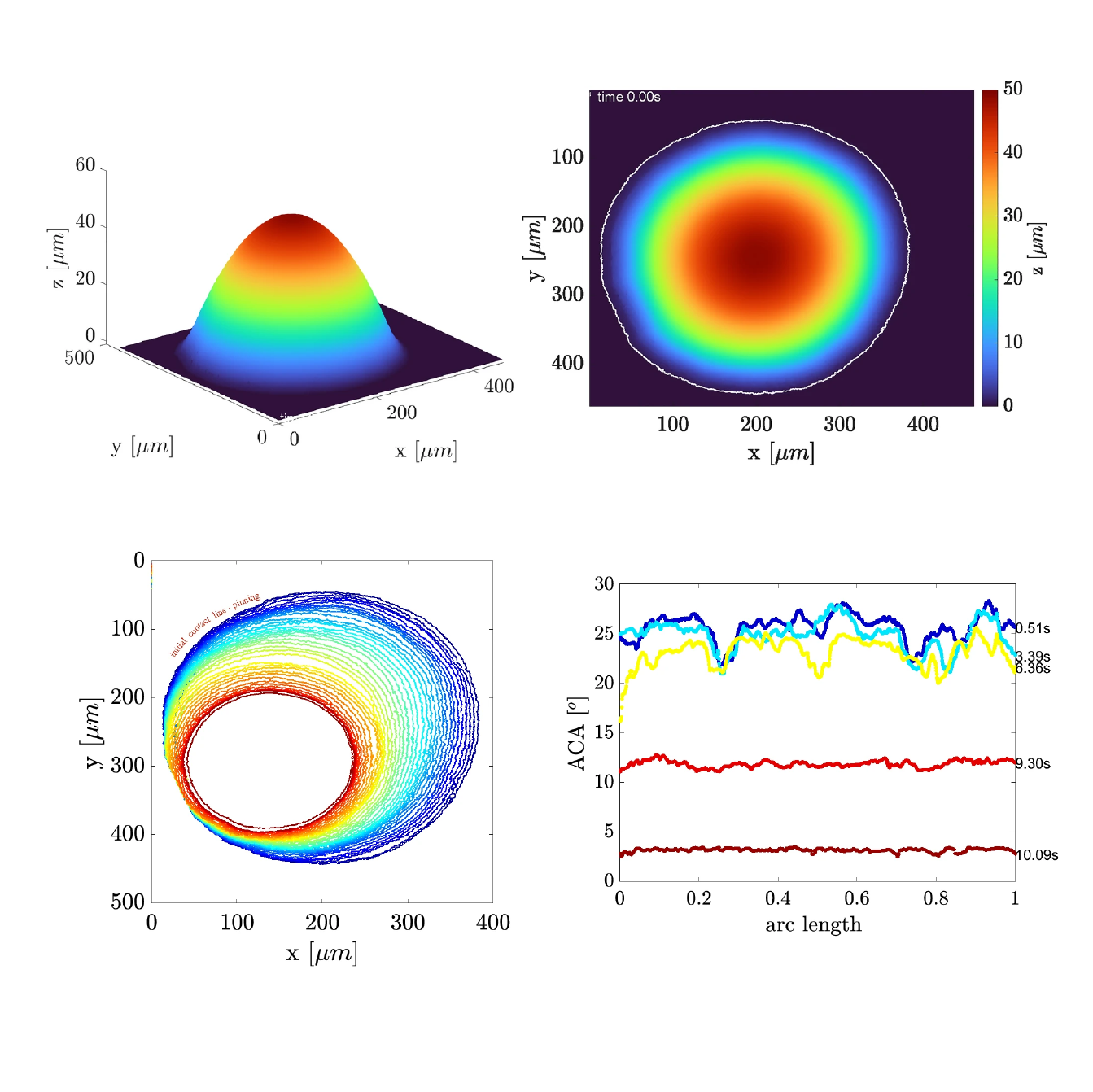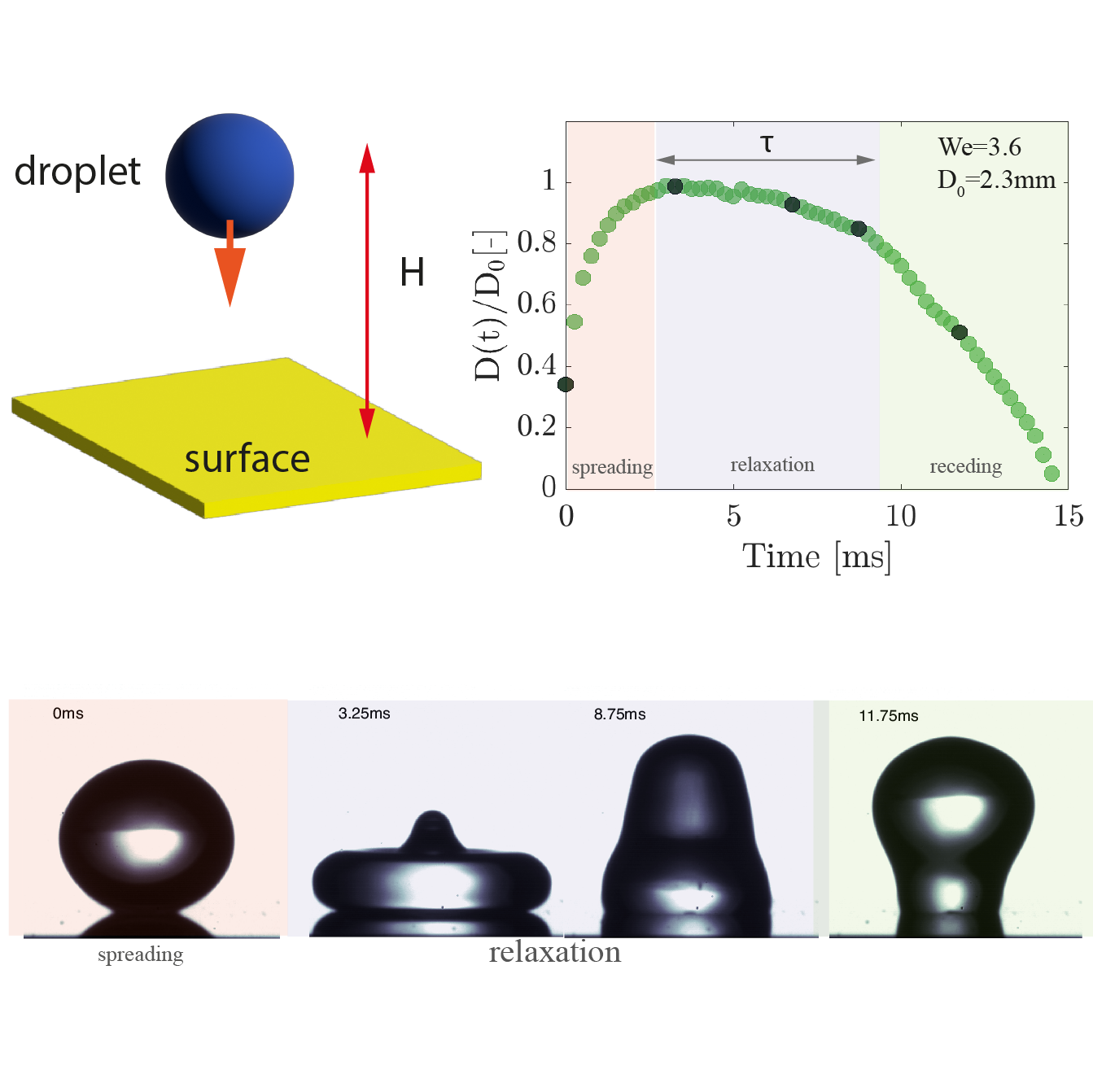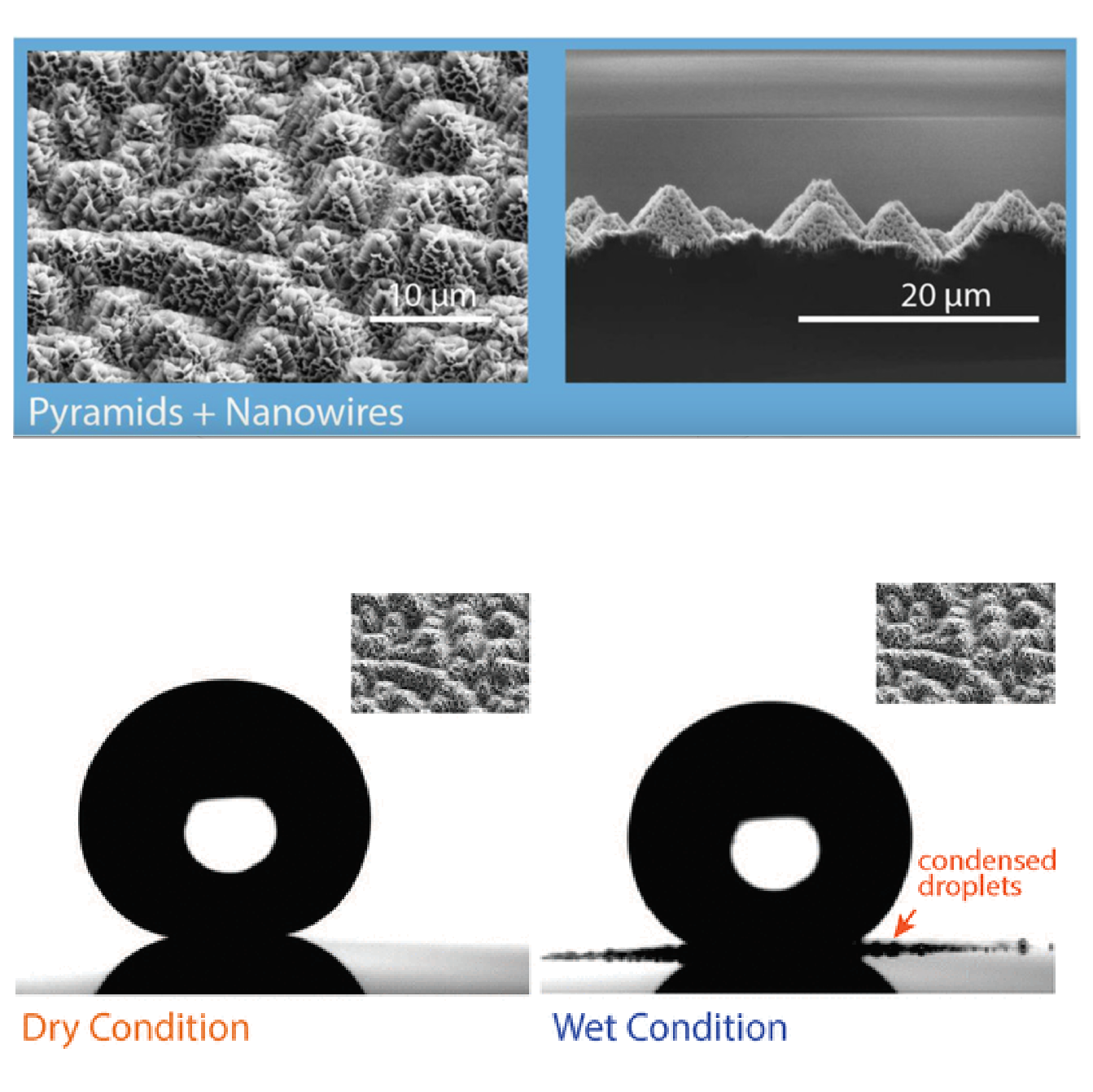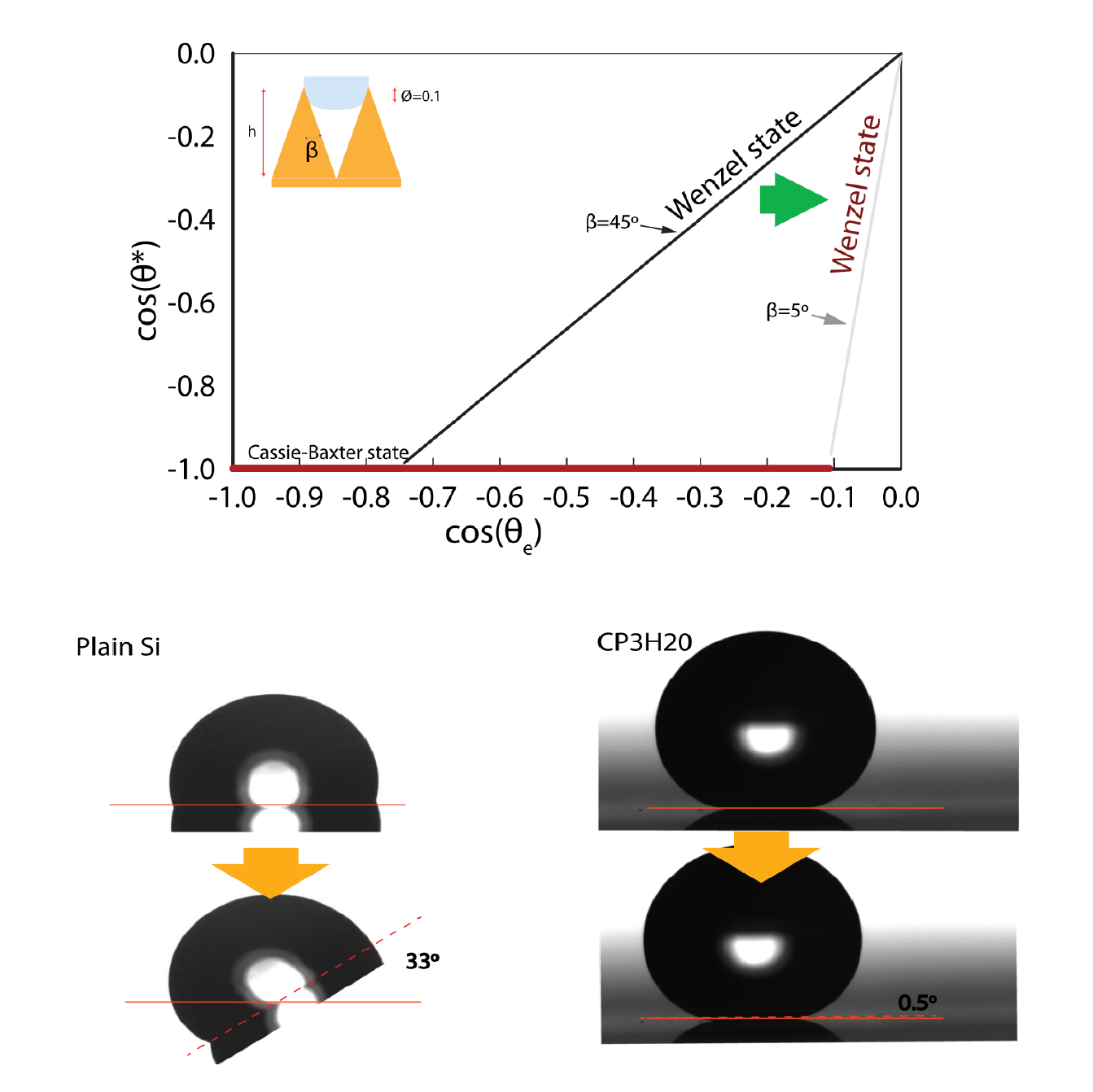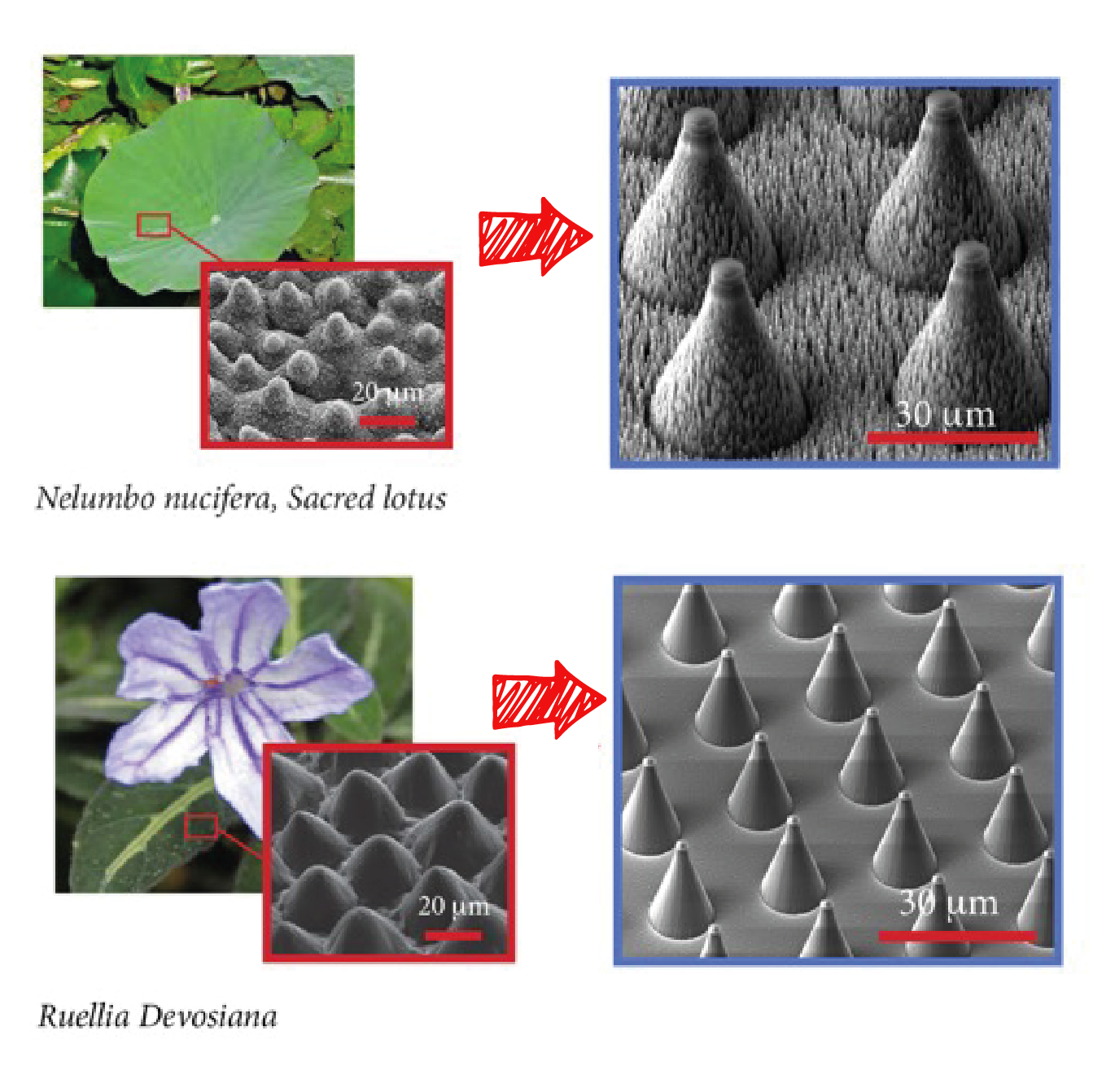Wetting and droplet dynamics
Wetting is a common phenomenon in a variety of practical domains including self-cleaning and anti-icing surfaces, heat management in high heat fluxes systems, painting and coating, corrosion of turbine blades and aircrafts, separation and oil repellency, among others. Understanding the mechanisms controlling wetting and droplet dynamics is essential for the design of tailored, durable and optimal surfaces for these applications. However, wetting dynamics is controlled by complex solid-liquid interfacial interactions occurring in scales raging from molecular to millimetric sizes. This multiphysics and multiscale behaviour, in addition to the short timescale involved, constitute a challenge for the investigation and understanding of the phenomena involved. Our research focuses on tunning the solid-liquid interfacial interactions by designing and fabricating micro- and nano-structured surfaces. These surfaces provide us with a tool for studying the mechanisms controlling wetting and droplet dynamics. We study the forces, velocity, and the singular flow near the vicinity of contact lines with the aim of identifying the mechanisms governing the dynamic wetting process. We fabricate the surfaces in at NTNU NanoLab cleanroom, using micro-/nano-fabrication techniques, such as Laser and Electron Beam Lithography combined with dry and wet etching. These surfaces and their wetting properties are characterized by Scanning Electron Microscopy and optical tensiometer. Our experimental methods for studying wetting dynamics include high-speed cameras and laser systems for studying droplet impact dynamics, a micro-PIV-LIF system used for studying the flow and temperature field inside sessile droplets, high speed infrared thermography for observing the temperature field, digital holographic microscopy for studying the dynamics of contact lines, and long working distance microscopy for studies related to evaporation and condensation. The experimental studies are combined with analytical and numerical methods for helping in the interpretation of the phenomena.
